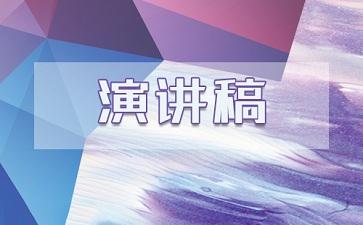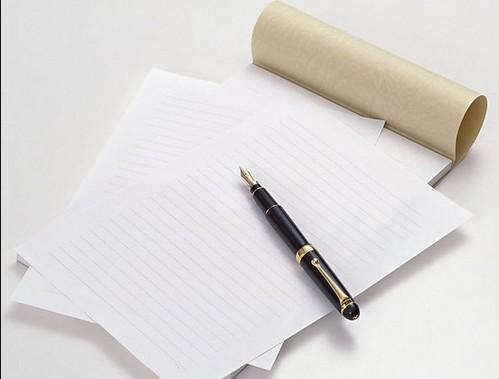下面是小编为大家整理的2023年镇江南山导游词(3篇),供大家参考。

范文为教学中作为模范的文章,也常常用来指写作的模板。常常用于文秘写作的参考,也可以作为演讲材料编写前的参考。大家想知道怎么样才能写一篇比较优质的范文吗?接下来小编就给大家介绍一下优秀的范文该怎么写,我们一起来看一看吧。
镇江南山导游词篇一
游客们:在前往金山途中,我先来介绍一下金山的形成情况。金山位于镇江市的西北,山高44米,绕山一周约520米。它原是大海之中的一座悬礁孤岛,随着沧桑变迁,由于长江在流向变动中多次冲击金山北岸的瓜洲,到清朝光绪元年(1875年),整个瓜洲全部塌入长江,就这样泥沙把金山与陆地联成一片,形成了金山的雏形。
金山的闻名还与金山寺的建造密切相关。早在东晋末年,金山上就建起了一座泽心寺。到了唐朝,有个名叫法海的禅师在此开山得金,重建了古刹,更名为金山寺,规模十分宏大,香火一直绵延至今。
美丽的金山还流传着许多动人的传说,《白蛇传》中的“水漫金山寺”一段故事,更为金山增添了一层神秘的色彩。游客们:下面就让我们去游赏金山吧!
【江天禅守:山门—天王殿—大雄宝殿】
各位游客:我们现在来到了金山寺山门,大家朝正方看:山门上悬挂着一块“江天禅寺”的横匾,这是清康熙皇帝来金山观光时亲笔题写的。山门气象森严,两只明代石狮雄踞两旁。不知各位有没有观察到,我国寺庙的山门一般是朝南的,而金山寺的山门却是朝西的,这是因为金山原来耸立在江心,长江由西向东奔流,寺门向西,站在寺门口可以看到“大江东去,群山西来”的壮观气势。这也反映了我国古代建筑师别具匠心。
金山寺最初建于东晋,距今已有1600多年的历史了,原名泽心寺。自唐以来,人们统称金山寺。全盛时期有和尚3000余人,参禅的僧侣有万人之多,在佛教禅宗寺庙中有着卓著的地位。
好!请各位随我进入山门。这是天王殿,是一座单檐歇山顶的五开间宫殿式建筑,中间供奉的是笑口常开的弥勒佛,背后是佛门的护法神韦驮,两侧是四大天王。
走出天王殿,迎面这座重檐歇山顶大殿,就是“大雄宝殿”,它由中国佛教协会会长赵朴初题写殿名。于1989年10月建成,总面积800平方米,黄墙红柱,金色的琉璃屋面,白石柱础栏杆,使整个大殿既有北方寺庙雄浑富丽的气势,又兼有南方园林精美雅致的风格,显得格外巍峨壮丽,金碧辉煌。
进入大殿,正中三尊金身佛像并列而坐,分别是释迎牟尼佛、药师佛和阿弥陀佛;两旁站立十八罗汉,形象高大,栩栩如生。左右阁楼上坐着56天尊。我们再来看背面,“五十三参”海岛群塑中,正中为观音菩萨,左为善财童子,右为龙女,左前方文殊菩萨骑着青狮,右前方普贤菩萨跨着白象,正上方地藏王菩萨坐骑揭谛兽,正中顶上为如来佛,四大天王分布下方左右。海岛上下四周,分布着大小不一,形态各异的被善财童子参拜过的53位菩萨的彩塑。特别引人注目的是,金山寺中的德云比丘,以及金山寺海岛也在其中。来到这里,我们仿佛进入了一个美妙的佛国世界。
【夕照阁—观音阁—“金山四宝”】
请大家随我从大殿后侧登山,进入夕照阁。阁内有保存完好的乾隆南巡金山时留下的7块御碑。这些石碑记载着乾隆六下江南对金山胜景的评价,还留下了一个颇有趣味的传闻:乾隆不是其父雍正皇帝所生,他6次来到金山寺,目的就是来寻找自己的生身父亲。
观赏了乾隆的御碑,由夕照阁上行至观音阁,去参观四宝室。室内珍藏着金山的镇山四宝:“周鼎、铜鼓、玉带和金山图”。先请各位来看“周鼎”:这是2700多年前,周宣王奖给北伐统帅遂启棋的青铜器,因而全称“周朝遂启棋大鼎”。1884年湖北汉阳叶志光赠给金山寺收藏。接着看“东汉铜鼓”:这是清代镇江知府魁元赠给金山寺的。相传为诸葛亮所创制,正面可作战鼓,反面能做炊具,民间称之为“诸葛鼓”。然后再请欣赏“东坡玉带”:相传是宋朝苏东坡与佛印和尚打赌输给金山寺的,带上缀系着长方形、圆形、心形等形状不同的白色玉片。玉带虽经900余年,仍然光洁如鉴。最后请大家观赏《金山图》:它是由“明四家”之一文徵明所绘。画中江水苍茫,金山中流,左有文做明的题诗,后有历代名人的题跋。
【妙高台—楞伽台】
由观音阁朝南沿石阶而上,我们来到了妙高峰的平台——妙高台。这是金山高僧佛印在宋元佑年间凿岩建造的,又称为晒经台。这里历来是中秋赏月的佳处,传说苏东坡的著名词作《水调歌头》就是在此地有感而发的。“梁红玉擂鼓战金山”的千古佳话,也发生在这里。1130年南宋名将韩世忠以400水兵将数万人侵金兵团在金山附近。韩夫人梁红玉登上妙高台,亲擂战鼓,鼓励士气,宋军大振,大破金兀术。从此巾帼英雄流芳百世,雄风千载。
从妙高台往南,来到了位于金山东南侧山腰上的楞枷台,又名苏经楼。“楞伽”是印度语,意为“不可住”,或者说是大海中远不可达、高不可攀的一座大山。这座傍山驳石的楼阁,建筑奇巧,由下而上要经过三重楼阁,每上一层,就难寻去路,但一开洞门,忽见有楼梯可登。大家要迂回曲折,才能到达楼顶,真有“山重水复疑无路,柳暗花明又一村”的感觉。
在最高层的两间宽敞休息厅里,可以看到许多古代红木家具、名人书画。中央有座玲珑的四方亭,因亭内曾陈列过苏东坡遗留下来的雪浪石,故取名“雪浪亭”。据说苏东坡晚年受老友佛印法师相托在此写过《楞枷佛经》。中国佛教协会会长赵朴初在这里写有“清风明月本无价,近山远水皆有情”的诗句。走上台顶厅外长廊,极目远眺,当我们看到了四面碧空万里、江天浑然一色的美景,是不是也能感受到“清风明月,近山远水”的意境呢?
【留云亭—佛印山房—七峰事—古仙人洞】
各位游客:请跟我由楞伽台向北沿台阶缓步而上,前去攀登金山顶峰的留云亭。留云亭是金山视觉最为开阔之处。传说当年康熙皇帝陪其母游览金山来到这里,看到大江东去,水天一色的壮景,情不自禁地说:“这里可谓江天一览。”官员们为了讨皇帝欢心,恭请圣上题词。当康熙写到“江天一”时,提笔忘字,忽然写不下去了。其中有一大臣见此情状,立即跪奏:“臣今见驾。”康熙听见“臣今见”,恍然大悟,随笔写出“览”字。因为“览”字繁体正是由“臣、今、见”三个单字组成,这位大臣巧妙地用拆字法提醒了康熙,十分机灵。虽然这是传说,但这四个字的确不是一气呵成。大家看,这“江天一”三字要比“览”字大些。因康熙御笔“江天一览”碑在亭内,故留云亭又称为“江天一览亭”。
从留云亭北走不远,便到了佛印山房。这里是宋代著名法师佛印的住处。相传,佛印与苏东坡是青年时代的好友,一次两人打赌,佛印失败,无奈出家遁入空门。由于他学识高超,最终成为金山和焦山两座寺庙的住持大方丈,苏东坡则成了宋代有名的大学士,两人经常在这里吟诗作画。
从佛印山房朝西北沿路西行,就来到了金山西侧的金鳌岭上的七峰亭,该亭又称七峰阁。据说岳飞当年被十二道金牌催返临安,途经镇江,到金山寺拜访道月方丈,告诉他自己昨夜营宿瓜洲时,梦见两犬讲话。道月解梦说:“二犬对言,是一狱字,此去恐怕有牢狱之灾,务必谨慎。”临别时,道月赠诗一首:“风波亭下浪滔滔,千万留心把舵牢。谨防同舟人意歹,将身推落在波涛。”意在提醒岳飞。岳飞被害于风波亭时叹息:“悔不听道月之言。”后来秦桧得知金山寺道月方丈能未卜先知,便派将军何立前去拘捕,何立刚到金山,见道月在召集佛会说法:“吾年四十九,是非终目有。不为自己身,只因多开口。何立自南来,我向西方走。不是佛力大,几乎落人手。”说完便坐化归天了。秦桧未拿到道月,认为金鳌岭上七峰突出,每代都出高僧,盛怒之下,下令削平七峰,以破坏风水,后人为纪念岳飞和道月就建了这座“七峰亭”。
沿七峰亭北面弯曲石级路向下,有一洞深6.6米,依山洞建筑一座半亭,这是道教遗迹。传说仙人吕洞宾曾在这里观望江面,所以叫仙人洞。国佛教徒也曾把观音供奉此洞,又名白衣洞。大家有兴趣的话,可以下去看看这个古仙人洞。
镇江南山导游词篇二
dear tourists, when you come to zhenjiang, the first choice must bejinshan. because jinshan is not only unique in terrain, but also known as "alotus in the middle of the river". what"s more important is that the buildingson the mountain are exquisite, and the mountain and the temple reflect eachother. the mountain is a temple, and the temple is a mountain. the mountain isnamed after the temple, and the temple adds color to the mountain. therefore, itis famous for "jinshan temple wrapping the mountain".
tourists: on the way to jinshan, let me first introduce the formation ofjinshan. jinshan is located in the northwest of zhenjiang city, with a height of44 meters and a circumference of 520 meters. it used to be a suspended reefisland in the sea. with the vicissitudes of life, because the yangtze riverimpacted the guazhou on the north bank of jinshan many times in the change offlow direction, the whole guazhou collapsed into the yangtze river in the firstyear of the reign of emperor guangxu of the qing dynasty (1875).
the famous of jinshan is closely related to the construction of jinshantemple. as early as the late eastern jin dynasty, a zexin temple was built onjinshan. in the tang dynasty, there was a buddhist monk named fahai who openedthe mountain and got gold here. he rebuilt the ancient temple and renamed itjinshan temple. the scale of the temple is very grand, and the incense hascontinued to this day.
there are many moving legends in the beautiful jinshan. the story of "wateroverflowing jinshan temple" in the legend of white snake adds a layer of mysteryto jinshan. tourists: let"s go to jinshan now!
[jiang tianchan"s guard: mountain gate tianwang hall daxiong hall]
ladies and gentlemen, we are now at the gate of jinshan temple. lookingfrom the right side, there is a plaque of "jiangtian temple" hanging on thegate, which was inscribed by emperor kangxi of qing dynasty when he visitedjinshan. the mountain gate has a strict atmosphere, with two ming dynasty stonelions on both sides. i don"t know if you have observed that the mountain gatesof temples in china generally face south, but the mountain gates of jinshantemple face west. this is because jinshan originally stands in the middle of theriver, the yangtze river flows from west to east, and the temple gate faceswest. standing at the temple gate, you can see the magnificent momentum of "theriver goes to the east and the mountains come to the west". this also reflectsthe ingenuity of chinese ancient architects.
jinshan temple was first built in the eastern jin dynasty. it has a historyof more than 1600 years. it was formerly known as zexin temple. since the tangdynasty, people have called it jinshan temple. in its heyday, there were morethan 3000 monks, and as many as 10000 monks participated in zen buddhism, whichplayed an outstanding role in buddhist temples.
good! please follow me to the mountain gate. this is the temple of heavenlykings. it is a five bay palace building with a single eaves on the top of themountain. in the middle is maitreya buddha, who is always smiling. behind it iswei tuo, the dharma protector of buddhism. on both sides are four heavenlykings.
walking out of tianwang hall and facing the hall with heavy eaves on thetop of xieshan mountain, it is "daxiong hall", which is inscribed by zhao puchu,president of china buddhist association. it was built in october 1989, with atotal area of 800 square meters. with yellow walls, red columns, golden glazedroof, white stone column base and railing, the whole hall has both themagnificent momentum of northern temples and the exquisite and elegant style ofsouthern gardens, which makes it particularly majestic and magnificent.
entering the main hall, the three golden buddha statues in the middle sitside by side, namely buddha shiying, buddha pharmacist and buddha amitabha; onboth sides stand eighteen arhats, with tall and vivid images. on the left andright attics sat 56 tianzun. let"s take a look at the back. in the center of thesculpture, there is guanyin bodhisattva, shancai boy on the left and dragon girlon the right. in the front left, manjusri bodhisattva rides a green lion, and inthe front right, puxian bodhisattva rides a white elephant. all around theisland, there are 53 painted statues of bodhisattvas of different sizes andshapes, which have been visited by shancai boy. in particular, deyun picchu injinshan temple and jinshan temple island are also among them. coming here, weseem to have entered a wonderful world of buddhism.
[xizhao pavilion guanyin pavilion four treasures of jinshan]
please follow me to climb the mountain from the back of the main hall andenter the sunset pavilion. there are seven well preserved steles left byqianlong during his southern tour of jinshan. these stone tablets recordqianlong"s comments on the beautiful scenery of jinshan in his six visits to thesouth of the yangtze river, and also leave an interesting rumor: qianlong wasnot born to his father emperor yongzheng. he came to jinshan temple six times tofind his biological father.
from xizhao pavilion to guanyin pavilion, you can visit the four treasuresroom. there are four treasures of jinshan: "zhou ding, bronze drum, jade beltand jinshan painting". first of all, let"s take a look at the "zhou ding": thisis a bronze ware awarded by king xuan of zhou to sui qiqi, the commander of thenorthern expedition, more than 2700 years ago, so it"s called the "zhou dynastysui qiqi ding". in 1884, ye zhiguang presented it to jinshan temple forcollection. then look at the "bronze drum of the eastern han dynasty": it wasgiven to jinshan temple by kuiyuan, the magistrate of zhenjiang in the qingdynasty. it is said that it was created by zhuge liang. it can fight drums onthe front and cook utensils on the back. it is called "zhuge drum" by the please enjoy the "dongpo jade belt": it is said that su dongpo of the songdynasty lost a bet with buddhist monk fo yin to jinshan temple. the belt isdecorated with white jade pieces of different shapes, such as rectangle, circleand heart. although the jade belt has been used for more than 900 years, it isstill as bright and clean as a mirror. finally, please enjoy the picture ofjinshan: it was painted by wen zhengming, one of the "four masters of mingdynasty". in the painting, the river is vast, and the golden mountain flows inthe middle. zuo youwen wrote poems about ming dynasty, followed by inscriptionsand postscripts of celebrities of past dynasties.
[miaogaotai - lengjiatai]
from guanyin pavilion to the south along the stone steps, we come tomiaogaotai, the platform of miaogaotai. this is the jinshan buddhist seal builtby drilling in the song and yuan dynasties, also known as the sun sutraplatform. it is said that su dongpo"s famous ci poem shuidiaogtou was inspiredhere. the eternal story of "liang hongyu fighting against jinshan" also happenedhere. in 1130, han shizhong, a famous general of the southern song dynasty,invaded jinshan with 400 sailors and tens of thousands of soldiers. han"s wife,liang hongyu, ascended the stage and personally challenged the battle drum toencourage the morale of the song army. since then, the heroines have beenimmortal for thousands of years.
from miaogaotai to the south, i came to lengjietai, also known assujinglou, which is located on the hillside of the south side of jindong."lengga" is an indian word, which means "not to live", or a mountain far awayfrom the sea. this pavilion, which is surrounded by mountains and rocks, is veryskillful. from bottom to top, it has to pass through the triple towers. it isdifficult to find its way to each floor. but as soon as the entrance is opened,suddenly there are stairs to climb. we have to take twists and turns to get tothe top of the building. it really feels like "the mountains are heavy, thewaters are complex, there is no way out, and the willows are dark and theflowers are bright".
in the two spacious lounges on the top floor, you can see many ancientmahogany furniture, celebrity paintings and calligraphy. there is an exquisitesquare pavilion in the center, which was named "xuelang pavilion" because of thedisplay of xuelang stone left by su dongpo. it is said that su dongpo wasentrusted by his old friend foyin master in his later years to write "lengjiasutra". zhao puchu, president of the buddhist association of china, wrote a poemhere: "the pure wind and bright moon are priceless, and there is love near themountains and far away from the water.". when we walk on the corridor outsidethe hall on the top of the stage and have a panoramic view, can we also feel theartistic conception of "clear wind and bright moon, close to mountains and faraway from water" when we see the beautiful scenery of blue sky and riversky?
[liuyun pavilion, foyin shanfang, qifengshi, guxianren cave]
ladies and gentlemen, please follow me up the steps from lengjia terrace toliuyun pavilion on the top of jinshan mountain. liuyun pavilion is the most openplace in jinshan. it is said that emperor kangxi accompanied his mother to visitjinshan. when he came here, he could not help saying: "here is a panoramic viewof the river and the sky." in order to please the emperor, the officialsrespectfully invited the emperor to write an inscription. when kangxi wrote"jiang tianyi", he forgot to write and couldn"t write any more. one of theministers saw this situation and immediately knelt down to play: "i see youtoday." when kangxi heard that "i see you now", he suddenly realized and wrotethe word "lan" in his essay. because the traditional chinese character "lan" iscomposed of "chen", "jin" and "jian", the minister skillfully used the method ofword splitting to remind kangxi. although this is a legend, these four words arenot all at once. look, the word "jiang tianyi" is bigger than the word "lan".because kangxi imperial pen "jiangtian glance" monument in the pavilion, soliuyun pavilion is also known as "jiangtian glance pavilion".
not far from the north of liuyun pavilion is foyin mountain house. this isthe residence of the famous master foyin in song dynasty. according to legend,foyin and su dongpo were good friends in their youth. once they made a bet,foyin failed, but they had no choice but to become a monk. because of hisexcellent knowledge, he eventually became the abbot of jinshan and jiaoshantemples, while su dongpo became a famous scholar in song dynasty. they oftenchanted poems and painted here.
from the foyin mountain house to the northwest, along the road to the west,you come to the qifeng pavilion on the jin"ao mountain, which is also calledqifeng pavilion. it is said that yue fei was urged back to lin"an by 12 goldmedals. he passed through zhenjiang and went to jinshan temple to visit abbotdaoyue. he told him that when he was camping in guazhou last night, he dreamedof two dogs talking. dao yue explained her dream and said, "two dogs are talkingto each other, which is a prison word. i"m afraid there will be a prisondisaster here. be careful." before leaving, dao yue presented a poem: "the wavesare surging under the storm pavilion. be careful to hold the rudder firmly. bewary of the bad will of your fellow boat, and push yourself into the waves. "intended to remind yue fei. when yue fei was killed in the storm pavilion, hesighed: "i regret not listening to the words of daoyue." later, when qin huilearned that the abbot of daoyue in jinshan temple could not predict, he sentgeneral he li to arrest him. when he arrived in jinshan, he saw daoyue calling abuddhist assembly and said, "i am 49 years old, and i have the end of right andwrong. not for yourself, just because you speak more. he li comes from thesouth, i go to the west. it"s not that the buddha is powerful. it"s almost doneby hand. " then he went back to heaven. qin hui didn"t get dao yue. he thoughtthat the seven peaks on jin"ao mountain were outstanding, and every generationhad eminent monks. in a rage, he ordered to flatten the seven peaks to destroyfeng shui. later generations built this "seven peak pavilion" in memory of yuefei and dao yue.
along the north side of qifeng pavilion, there is a 6.6-meter-deep cave. ahalf pavilion is built according to the cave. it is a taoist relic. legend hasit that immortal lu dongbin once watched the river here, so it is calledimmortal cave. chinese buddhists once worshipped guanyin in this cave, alsoknown as baiyi cave. if you are interested, you can go down and have a look atthis ancient immortal cave.
镇江南山导游词篇三
jinshan scenic spot is a national aaaaa scenic spot. it is located in thenorthwest of zhenjiang city, north of the tropic of cancer. with a height of 44meters and a circumference of 520 meters, it used to be the only island in theyangtze river. it is known as a "lotus" in the middle of the yangtze river. shenkuo"s poem "the water on both sides of the building is connected, and the sky inthe mirror of jiangnan and jiangbei" in the song dynasty is a portrayal ofjinshan. the architectural style of jinshan buddhist temple is unique. it isbuilt close to the mountain, with halls, pavilions and pavilions, and ed with each other, it is bright and blue. in addition, cishou pagodastands on the top of jinshan mountain, rising abruptly from the ground, makingthe whole jinshan mountain seem like a magnificent temple, forming a uniquestyle of "temple wrapped mountain".
entering the mountain gate is the heavenly king hall, which is a palacestyle building with a single eaves and a mountain to rest
maitreya buddha, whose mouth is always open, is flanked by the fourheavenly kings, also known as the four vajras. behind the heavenly king hall isthe majestic hall with double eaves and xieshan. in the center of the main hallare three golden statues of sakyamuni buddha, pharmacist buddha and amitabhabuddha. on the west wall are eighteen arhats. on the left and right attics sit56 heavenly statues. there are islands on the back of the three buddhas. aroundthe island are the statues of 53 bodhisattvas of various sizes and shapes.
the rooms on both sides of the main hall are the abbot"s room and the placewhere the benefactor is received.
climbing from the back of the main hall to xizhao pavilion, there are sevenqianlong steles preserved in the pavilion. ascending from xizhao pavilion toguanyin pavilion, there are four treasure rooms displaying the four treasures ofjinshan: zhou ding, tonggu, yudai and jinshan map.
guanyin pavilion is connected with miaogaotai and lengjiatai in the south,and cishou tower and fahai cave rafters in the north. from lingjiatai to thenorth, you can reach liuyun pavilion, the peak of jinshan mountain. in thepavilion, there is a stone tablet named "jiangtian glance" written by emperorkangxi. therefore, this pavilion is also called jiangtian glance pavilion. inthe northwest of liuyun pavilion, there is a qifeng pavilion commemorating yuefei, a national hero of the southern song dynasty. to the north of the pavilion,there is an ancient immortal cave at the foot of jin"ao mountain, which is arelic of taoism.
from guanyin pavilion to the north, you can climb the cishou tower, whichwas first built in qiliang, more than 1400 years ago. there used to be twopagodas in jinshan, which have been abandoned. the existing pagoda was rebuiltin 1900. the body of the tower is a wooden structure with seven steps. there arestairs to go up and down. each floor is surrounded by corridors andguardrails.
from the cishou pagoda to fahai cave, this is the place where the founderof jinshan temple, pei toutuo, the buddhist monk fahai, practiced hard. thereare statues of fahai in the cave. in the north of fahai cave and beside yudaibridge, there is a white dragon cave. according to legend, there are stonestatues of white lady and xiaoqing in the cave.
along the bailong cave right up not far to chaoyang cave, this cave is alsoknown as rizhao rock. the hanging rock on the top of the cave is engraved withthe word "rizhao rock". every time the sun rises, the stone wall in this area isfacing the rising sun, and the golden light is shining everywhere. the water andsky are all red, which is a wonder. it is the best place to watch the sunrise injinshan. the three characters "chaoyang cave" carved on the cliff were writtenby tengmi in ming dynasty.




